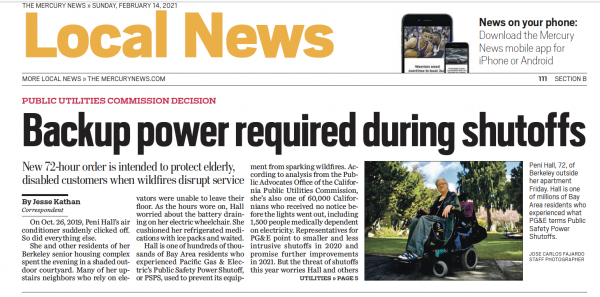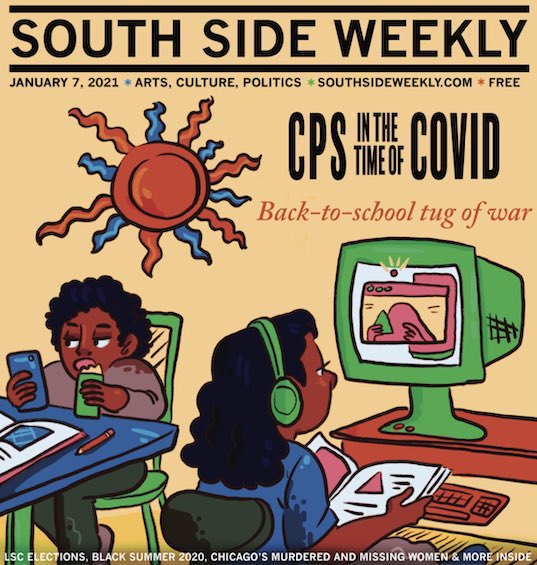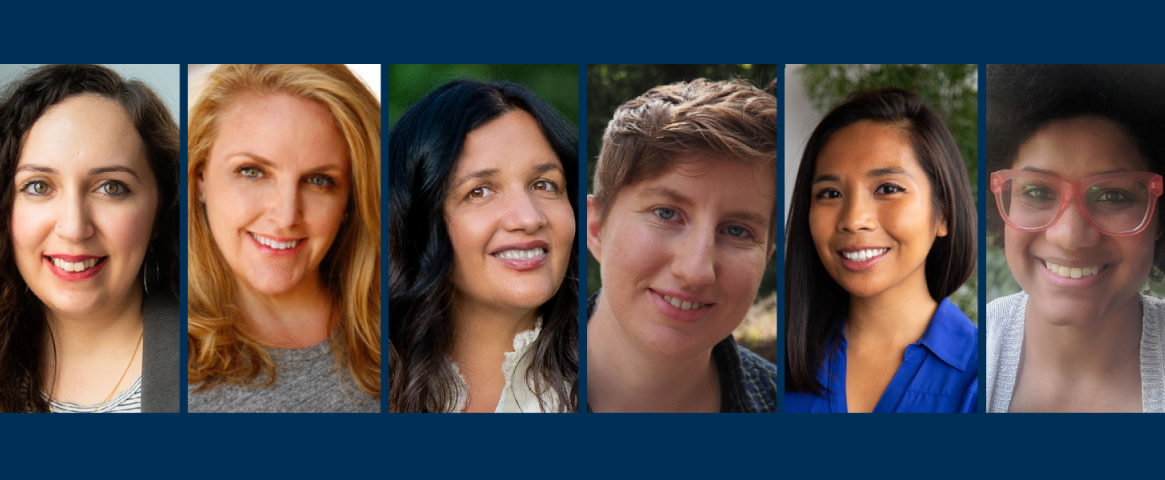Last October, Chandra Bozelko, Ambika Chawla, Jesse Kathan, Ciara Reyes-Ton, and reporting duo Elora Apantaku and Charmaine Runes were selected as recipients of NASW’s new Diversity Reporting Grants.
The program was launched by NASW’s Diversity Committee to support freelance science writers, many of whom were having difficulty finding work during the COVID-19 pandemic.
Each project received $1,000 to support recipients’ travel, time, and other costs as they reported on how a science- or health-related issue is affecting marginalized communities.
Here’s what they produced:
Chandra Bozelko published a piece on why inmates aren’t prioritized for COVID-19 vaccination despite being in long-term care facilities in STAT News and an opinion piece on why hyperfederalism and science can’t easily co-exist.
“The grant was invaluable for me to cover vaccination in prisons in ways that other outlets/journalists have not. I was able to advance new ideas and different ways of thinking about government and how elected and non-elected officials handle scientific data and evidence, especially when it presents a moral imperative that isn’t politically popular,” Bozelko said.
The grant helped offset the high price of prison phone calls, enabling her to speak with 21 inmates at a cost of several hundred dollars.
Through her reporting, Bozelko learned that some prisons’ decision to incentivize inmates to get vaccinated by offering time off their sentence, snack packages or cash payments may backfire.
“Many inmates viewed the need to incentivize the shots as an admission that there was something inherently dangerous about them,” she said.
“It’s funny how connecting with people inside works; I learn about what’s happening in there and they learn that someone cares enough to look into it. I came across story ideas like the water quality in prisons and how it affects inmates’ health. It seems to be a persistent problem for correctional facilities and very few journalists have covered it at all, much less in depth.”
Ambika Chawla developed two stories about health disparities among different communities due to unequal access to green space in cities. She writes, “I was surprised to learn that lower income, communities of color experience “nature deprivation” at three times the rate as white Americans, with Black communities experiencing the highest levels of nature deprivation.”
Her first story, published by Environmental Health News, Chawla interviewed a young woman of color, Damar Garcia, to learn more about what she perceives to be the barriers for young people of color to gain access to urban nature and ways in which inequitable access to green space in cities may lead to health disparities among young people.
“I love interviewing young people because they often feel that the media and decision-makers do not hear their voices,” Chawla said. “Throughout my brief career as an environmental journalist, I have had the privilege to interview several youth environmental activists and I have learned that they absolutely love to share with me their insights and experiences. They all express so much gratitude, as if they want to tell me: ‘Finally! someone cares about my opinion!’.”
Chawla’s second article, published in Ensia, looks at the Platte Farm Open Space located in the diverse, working class neighborhood of Globeville, in north Denver, as an example of a successful, community-led green space initiative that brings considerable recreational and health benefits to residents. This article was republished in Yes! magazine.
Her new website, Urban Climate Innovations, includes policy reports and articles on a variety of topics related to environment and development.
 Jesse Kathan wrote about the impact of wildfire-related power shutoffs on disabled people who are medically dependent on electricity. These shutoffs are a really stark example of how climate change most heavily affects the most marginalized members of society. Kathan’s article was published in The Mercury News and the East Bay Times.
Jesse Kathan wrote about the impact of wildfire-related power shutoffs on disabled people who are medically dependent on electricity. These shutoffs are a really stark example of how climate change most heavily affects the most marginalized members of society. Kathan’s article was published in The Mercury News and the East Bay Times.
"Throughout the reporting process, I considered what it means to report on marginalized communities of which I am not a member. Although I experience chronic illness, I am not disabled and do not deal with institutional ableism. I think all environmental reporters should consider the way disasters uniquely affect the disability community, but writing about marginalization I don’t personally experience is not a responsibility I hold lightly," Kathan said.
"I’ve learned a lot from writers like Alice Wong and resources like the Disability Visibility Project, which is filled with fantastic, deeply crucial journalistic work. I’d encourage all science journalists who cover beats like health and environmental justice to take time digging into the writing and activism that is taking place in the disability justice movement."
Kathan plans to continue to report on the fires’ impact on disabled people in California over the coming summer and fall.
Ciara Reyes-Ton interviewed pastors from across the US and from a variety of denominations about issues at the intersection of faith, science and human health. Her stories are published at BioLogos.org.
Pastoring Through a Pandemic: Rev. Leonard Curry shares the story of a new pastor who gained a congregation in the throes of the COVID pandemic, and how he ultimately decided to hold remote church services indefinitely for the health and safety of his congregation.
In Persisting in Curiosity: Rev. Harvey Clemons & Dr. Philisie Washington, a pastor and a scientist in his congregation discuss the value of curiosity to both theological and scientific endeavors.In Conveying Truth: Dr. Leonard Scott A pastor who is also a dentist shares the importance of spiritual, mental and physical health.
Fighting Health Stigmas at Church: Pastor John Faison, Sr. features a pastor who is fighting the health stigma of HIV/AIDS in his congregation by getting tested himself and encouraging his congregation to do the same.
“The goal of my project was to raise greater awareness on issues of science, religion and race and encourage sustained engagement with marginalized populations,” Reyes-Ton said. “I see this work as an ongoing one, and plan to publish another series spotlighting scientists of color in predominantly African American churches in the coming months and continue pitching to more publication platforms. I am beyond grateful to have been selected as one of the recipients for this grant.”
Reyes-Ton said more articles are forthcoming, including a series spotlighting scientists of color in predominantly African American Churches for Peaceful Science blog.
 Elora Apantaku and Charmaine Runes reported on the risks and benefits associated with both remote learning and reopening Chicago Public Schools during the COVID-19 pandemic. Their story was published in South Side Weekly.
Elora Apantaku and Charmaine Runes reported on the risks and benefits associated with both remote learning and reopening Chicago Public Schools during the COVID-19 pandemic. Their story was published in South Side Weekly.
“We talked to dozens of people about a constantly evolving issue over the course of several months—and as the story evolved, so did our reporting. We navigated bureaucracies and the busy schedules of teachers. We analyzed different data sources. We reached out to friends and neighbors,” Runes said. “It was deeply rewarding to examine this story from multiple angles and its effects on hundreds of thousands of people. And it was exciting to work as partners. We focused our energies in our respective areas of strength, but we also learned from each other and grew as journalists.”
Apantaku and Runes shared these takeaways from the experience:
- It’s okay if your timeline shifts. We had initially planned to finish up our interviews by the end of the summer and publish in mid-October. But by the time November came, we were still working through edits and trying to get in touch with sources. We proactively communicated with our editors and worked with them to get our story to where it needed to be.
- Ask for help. While we both leaned into our strengths for this story, whether that was wrangling data or relentlessly following up with sources, we also leaned on each other for support. We cleaned a dataset together. We both conducted interviews. We collaborated, critiqued and celebrated each other’s work, and that made our story and our reporting better.
- Remember why you pitched the story. There were many times when we felt discouraged and frustrated. Rereading our pitch and remembering why we wanted to write this story - to investigate whether “remote learning for everyone” disproportionately affects students on the South and West Sides - in the first place helped us move forward and focus on immediate next steps.
Read more about the Diversity Reporting Grants and recipients here.


